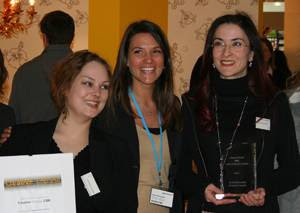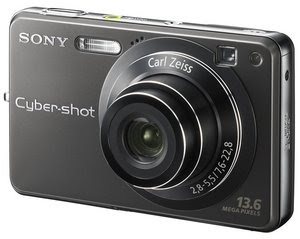- COLOR-HELIAR 75mm F2.5 Silver
- APO-LANTHAR 90mm F3.5 Silver
- 50mm View Finder
- 90mm View Finder
- LENS HOOD LH-4 ( SHIFT TO LH-4N)
- LENS HOOD LH-5 ( SHIFT TO LH-6)
- LENS CASE VL-1,VL-2
- LH-40S
- ULTRON 28mm F1.9 Aspherical
- COLOR-SKOPAR 50mm F2.5
- COLOR-SKOPAR 35mm F2.5 P Type
- Double Shoe Adapter A type
- COLOR-SKOPAR 28mm F3.5
- ULTRON 35mm F1.7 Aspherical
- SUPER WIDE-HELIAR 15mm F4.5 SL Aspherical
- APO-LANTHAR 90mm F3.5 SL Close Focus
- APO-LANTHAR 180mm F4 SL Close Focus
- F→L ADAPTER RING
- SHOE BASE
- SHOE ADAPTER
- HOOD LH-75
- STRAP ADAPTER
- BOTTOM GRIP-A
- BOTTOM GRIP-B
- ULTRA-WIDE HELIAR 12mm F5.6 SL Aspherical
- ULTRON 40mm F2 SL Aspherical
- MACRO APO-LANTHAR 125mm F2.5 SL
- HOOD LH-40 D
- SNAPSHOT-SKOPAR 25mm F4
- COLOR-HELLIAR 75mm F2.5 SL
- BESSA-T
- BESSA-R3A Black Body
- F→S/C Adapter Ring
- Double Shoe Adapter B,C type
- Bessaflex TM Black
- Bessaflex TM Silver
- BESSA R2S
- SC SKOPAR 21mm F4
- SC SKOPAR 25mm F4
- SC SKOPAR 28mm F3.5
- SC SKOPAR 35mm F2.5
- S SKOPAR 50mm F2.5
- S NOKTON 50mm F1.5 Aspherical
- S APO-LANTHAR 85mm F-3.5
- PROMINENT STANDARD LENS ADAPTER-RING FOR S MOUNT, C MOUNT
28/02/08
Voigtlander Discontinued Items
25/02/08
Design Award for Technical Lenses from Carl Zeiss

24/02/08
Sony Cyber Shot W300
- 13,6 millions de pixels effectifs
- Boîtier en Titane anti-rayures et traces de doigt
- Objectif Carl Zeiss Vario-Tessar avec zoom optique 3x
- Détection automatique des visages et des sourires
- Reconnaissance automatique des Scènes
- Stabilisateur optique Super SteadyShot et Haute Sensibilité ISO 3200
- Grand écran LCD de 2,7 pouces haute résolution
- Sortie Haute Définition
20/02/08
Hahnemuhle Prix Creative Impulse 2008



15/02/08
Xaviera Simmons Driskell Prize 2008
The High Museum of Art announced Brooklyn-based artist Xaviera Simmons as the 2008 recipient of the David C. Driskell Prize. Named after the renowned African American artist and art scholar, the Driskell Prize recognizes a scholar or artist in the beginning or middle of his or her career whose work makes an original and important contribution to the field of African American art or art history. Simmons’ work combines 21st-century media and traditional art forms, encompassing photography, performance, video and installation. Xaviera Simmons will be awarded at the Driskell Prize Dinner in Atlanta on April 21, 2008, and will give a public lecture at the High in July 2008, in conjunction with the National Black Arts Festival.
 Photo: © Xaviera Simmons, Work In Progress: A New Era Americana, 2007. Color photograph, produced in conjunction with The Queens Museum of Art. Courtesy of the artist and March Gallery.
Photo: © Xaviera Simmons, Work In Progress: A New Era Americana, 2007. Color photograph, produced in conjunction with The Queens Museum of Art. Courtesy of the artist and March Gallery.
“Innovation and exploration are key components of a Driskell Prize winner’s artistic practice,” said Michael E Shapiro, Nancy and Holcombe T. Green, Jr. Director of the High. “Xaviera Simmons’ work challenges existing ideas regarding history, community and art by allowing viewers and artists to participate in the environments she creates. We are pleased to honor Simmons’ fresh perspective in the field of African American art by awarding her this recognition.”
Xaviera Simmons thoroughly examines and engages a range of familiar topics, including landscape, history and community. In her newest photography series, titled “A New Era Americana,” she photographs passersby in front of pastoral backdrops on city streets, creating an uncertain and conflicted portrait. In works like these, Simmons uses visual cues to challenge the notion of a constructed identity.
Xaviera Simmons’ most acclaimed work is an installation piece commissioned in 2006 by Art in General for its storefront in New York City. Originally titled “How to Break Your Own Heart: Visitors Welcome,” the piece transformed the gallery’s project space into a “jazz salon.” This area featured felted floors, seating, a DJ booth, impromptu performances and a 24-hour video presentation. Simmons treated the walls with vintage jazz LP covers and scheduled musical performances, including her own DJ sets. Since its initial installation, “How to Break Your Own Heart” has tripled in size and traveled to the Contemporary Arts Museum in Houston, Texas, and the Zacheta National Art Gallery in Warsaw, Poland.
Born in 1974, Xaviera Simmons became a Cave Canem Poets Fellow in 2002 and received her Bachelor of Fine Arts in photography from Bard College in 2004. She completed a two-year actor-training conservatory program with Maggie Flanagan in 2005, as well as a studio residency with the Whitney Museum Independent Study Program in New York City. In 2007 Simmons was awarded a Jerome Foundation Travel and Study Grant and an “In the Public Realm” commission from The Public Art Fund. In 2008 Simmons will show works at March Gallery, New York City, and at the Bronx Museum of Art in “Street Art, Street Life.” She will also serve as an artist-in-residence at Platform Garanti in Istanbul, Turkey. She currently lives and works in Brooklyn, N.Y.
The selection process for the 2008 recipient of the Driskell Prize began with a call for nominations from a national pool of artists, curators, teachers, collectors and art historians. The final winner was chosen from these nominations by review-committee members Richard Powell, Professor of Art History at Duke University; Alvia Wardlaw, Curator of Contemporary Art at the Museum of Fine Art, Houston; Franklin Sirmans, Curator of Modern and Contemporary Art at The Menil Collection; and Jeffrey Grove, Wieland Family Curator of Modern and Contemporary Art at the High Museum of Art, Atlanta.
Past recipients include
2007 - scholar/curator Franklin Sirmans
2006 - artist Willie Cole
2005 - scholar Dr. Kellie Jones
14/02/08
Ilford Film Developper Ilfosol 3
05/02/08
Michael Cajero, Eric Firestone Gallery, Scottdale, AZ - We Need to Dream This All Again
Eric Firestone Gallery, Scottdale, AZ
February 7 - March 15, 2008
ERIC FIRESTONE GALLERY
4142 North Marshall Way, Scottsdale, Arizona 85251
www.ericfirestonegallery.com
04/02/08
Kyocera Mita FS-1100-N FS-1300D-DN
03/02/08
New York Photo Competition 2008

02/02/08
New York Photo Festival

01/02/08
Sony Reflex A300 et A350
La famille des reflex numériques Sony α s’agrandit, et accueille deux nouveaux venus : les reflex Alpha 300 et 350
- Système de mise au point Quick Auto Focus Live View pour des images prises sur le vif en visant par l’écran.
- Résolution jusqu’à 14,2 mégapixels effectifs et capteur CCD APS-C pour des performances visuelles remarquables.
- Ecran LCD de 2,7 pouces inclinable pour des prises de vue en toute liberté
- Système Super SteadyShot™ amélioré offrant des performances antitremblement permettant de baisser la vitesse d’obturation de 2,5 à 3,5 paliers avec tous les objectifs α Alpha
- Sensibilité jusqu'à 3200 ISO avec réduction du bruit numérique en haute sensibilité pour des photos plus nettes même par faible éclairage.
A la réactivité du système de mise au point automatique Quick AF Live View permettant des prises de vue sur le vif, ils allient une très haute qualité d’image et des fonctions à la fois créatives et simples d’utilisation.
L’α350 intègre un tout nouveau capteur CDD de type APS-C de 14,2 mégapixels pour des images riches en détails et plus vraies que nature. Le modèle α300 [A300] est doté presque des mêmes caractéristiques (résolution de 10,2 mégapixels).
Ces deux nouveaux modèles viennent compléter la gamme α qui compte désormais quatre boîtiers aux caractéristiques uniques, faciles d’utilisation, allant du modèle d’entrée de gamme α200 [A200] au sophistiqué α700 [A700], qui ravira les amateurs confirmés et les semi-professionnels. La famille α compte également plus de 24 objectifs compatibles ainsi que des systèmes de flashes et d'autres accessoires.
Système de mise au point automatique Quick AF Live View...pour des prises de vue créatives à grande vitesse. Les modèles α350 et α300 sont les premiers appareils photo reflex numériques à se doter de la technologie Quick AF Live View. Exclusif à Sony, ce tout nouveau système combine le côté pratique de la prise de vue par l’écran avec la réactivité du système à détection de phase TTL ainsi que la prise en rafale rapide. Pour la première fois, le système Quick AF Live View parvient à dépasser les limites techniques qui empêchaient jusqu'ici la prise ultrarapide et le visionnage en mode de visée directe.
En outre, un capteur de mise au point automatique centrée 9 points permet un réglage plus rapide et plus précis aussi bien en mode visée directe qu'en mode viseur optique. Grâce à l'écran LCD de 2,7 pouces, les photographes de tous les niveaux pourront composer leurs clichés avec un plus grand confort et en toute liberté. Inclinable vers le haut jusqu'à 130 degrés et vers le bas jusqu'à 40 degrés, l'écran à angle variable permet au photographe de rester face à face avec son sujet. Les effets du compensateur d'exposition et de la balance des blancs peuvent être facilement visionnés en mode visée directe. Il est bien sûr également possible d'utiliser le viseur optique, lumineux et clair.
Une qualité d'image exceptionnelle - Le modèle α350 est doté du dernier-né des processeurs d'image BIONZ de Sony qui tire le meilleur des performances du capteur CCD haute résolution. Grâce au processeur BIONZ, le nouveau D-range Optimizer règle dynamiquement l'exposition, pour des ombres intenses et des détails tranchés même en pleine lumière. Grâce à l'amélioration de la reconnaissance des scènes à contre-jour, les résultats sont encore meilleurs, même pour les sujets problématiques.
La sensibilité maximale, qui atteint 3200 ISO, permet des prises de vue sans flash réussies dans des conditions de faible luminosité, même sans trépied. Un mode spécial de réduction du bruit pour les valeurs ISO élevées améliore encore la qualité des images même pour un réglage très sensible.
Le système de stabilisation Super SteadyShot™ intégré améliore les performances anti-tremblement lors des prises sans trépied avec tous les objectifs α. Un nouvel algorithme de contrôle porte la correction à un niveau compris entre 2,5 et 3,5 paliers, contre 2,0 – 3,5 paliers pour l’α100.
Larry Clark, Los Angeles 2003 – 2006 at Simon Lee Gallery
Simon Lee Gallery presents an exhibition of new photographs by the renowned American photographer and filmmaker Larry Clark.
Los Angeles 2003-2006 reflects the artist's life-long interest in the subject of today's youth within a marginalized urban environment. In this particular body of work, we witness the physical transformation of Jonathan Velasquez throughout the period of his adolescent years. Jonathan, a teenager living in South Central Los Angeles whom the artist encountered by chance, inspired Clark to write and direct the film Wassup Rockers. In this obsessive four year photographic chronicle of Jonathan's life, we experience not so much the unfolding of a series of portraits but rather the weaving of the subject's personal life within the context of a particular social milieu common to so many of today's urban youth subcultures.
Building upon Larry's previous photographic accomplishments beginning with Tulsa, Teenage Lust, 1992, the Perfect Childhood, punk Picasso, and in film with Kids, Bully, Ken Park and Wassup Rockers this series of photographs further probes with equal intensity and unabashed honesty the often subtle, often glaring changes that all youth, and in particular Jonathan, go through in their teenage years. The close-up shots, the fulllength frontal views, the groupings of Jonathan with his friends all combine to portray the vulnerability as well as the subjects’ expressions of newfound individuality, vitality and independence of life style. The large scale pigment prints reflect a departure for Clark from the more spare and documentary sensibility that characterize his earlier work, and in so doing allow for a more tender and evocative exploration of his subject.
Exhibition catalogue: A monographic publication featuring the entire series of photographs accompany the exhibition.
Related post : Larry Clark, Tulsa and Teenage Lust – Simon Lee Gallery
updated 2009


